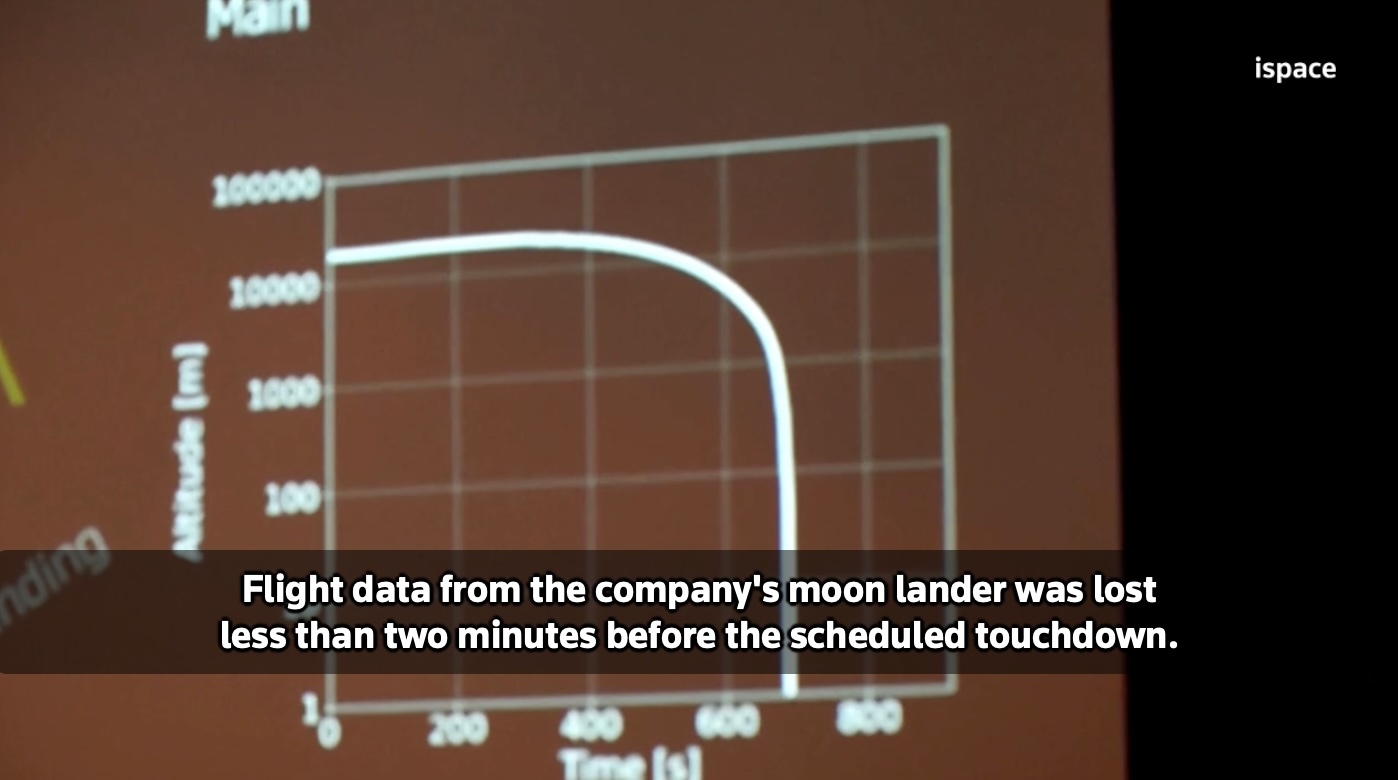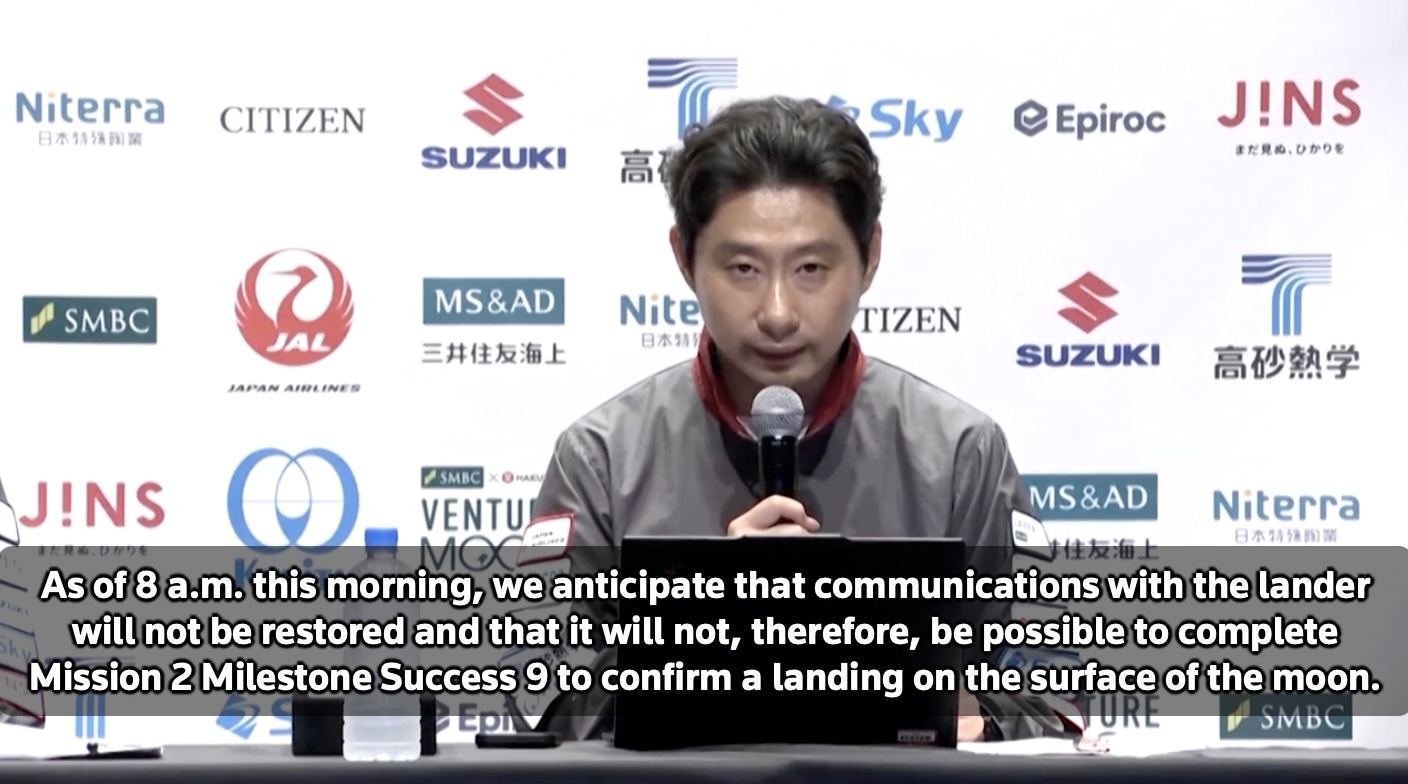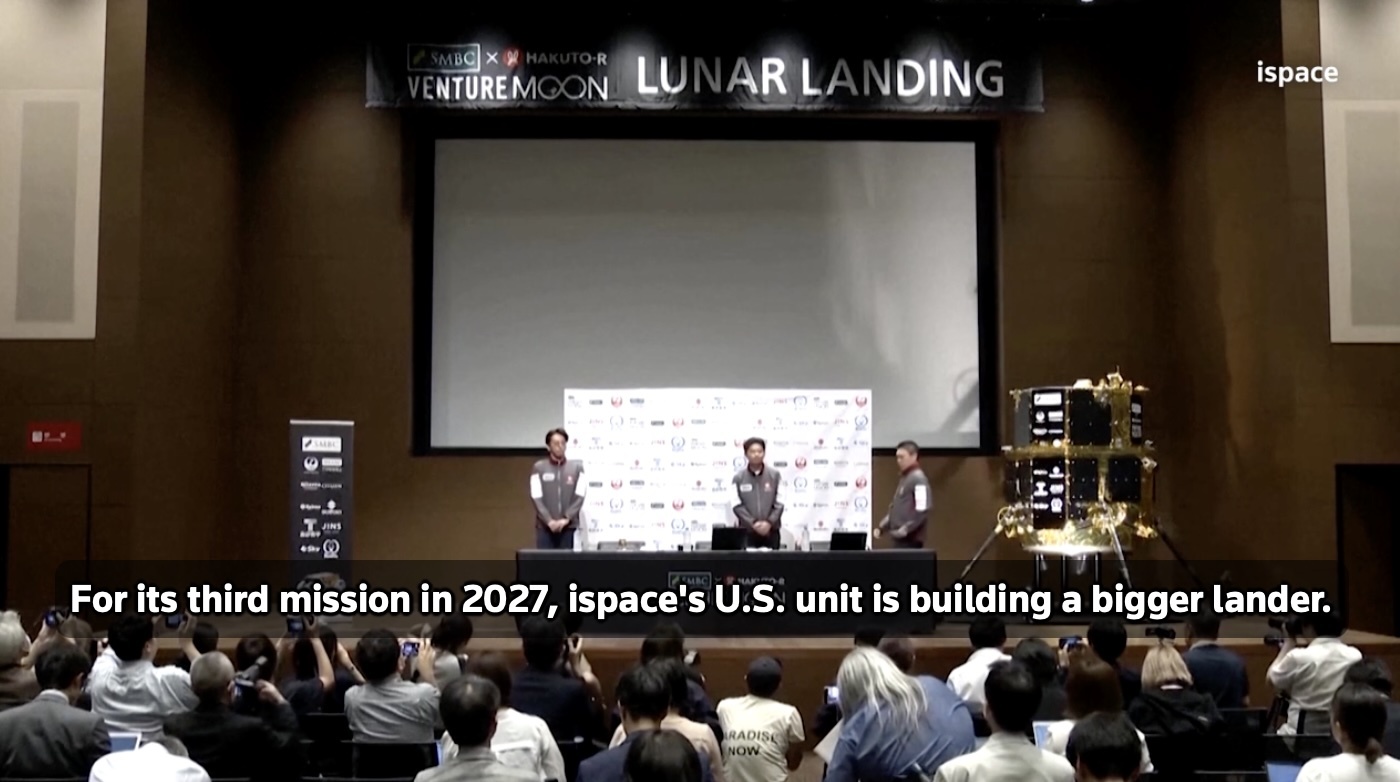A room of more than 500 ispace employees, shareholders, sponsors and government officials abruptly grew silent when flight data was lost less than two minutes before the scheduled touchdown time during a public viewing event at mission partner Sumitomo Mitsui Banking Corp in the wee hours in Tokyo.
Shares of ispace were untraded, overwhelmed by sell orders, and looked set to close at the daily limit-low, which would mark a 29% fall. As of the close of Thursday, ispace had a market capitalisation of more than 110 billion yen ($766 million).
"We're not facing any immediate financial deterioration or distress because of the event," CFO Jumpei Nozaki said in the press conference, citing recurring investor support.
In 2023, ispace's first lander crashed into the moon's surface due to
inaccurate recognition of its altitude. Software remedies have been implemented, while the hardware design was mostly unchanged in Resilience.
The lander had targeted Mare Frigoris, a basaltic plain about 900 km (560 miles) from the moon's north pole.
If the landing had been successful, the 2.3-metre-high lander and the rover would have begun 14 days of planned exploration activities, including capturing of
regolith, the moon's fine-grained surface material, on a contract with U.S. space agency NASA.
Resilience in January shared a SpaceX rocket launch with Firefly's Blue Ghost lander, which took a faster trajectory to the moon and
touched down successfully in March.
Intuitive Machines, which last year marked the world's first commercial lunar touchdown, also landed its second Athena lander in March, although in a
toppled position just as with its first mission.
Japan last year became the world's fifth country to achieve a soft lunar landing after the former Soviet Union, the United States, China and India, when the national Japan Aerospace Exploration Agency achieved the touchdown of its
SLIM lander.
The government last year signed an agreement with NASA to include
Japanese astronauts in Artemis lunar missions and has supported private companies' research projects for future lunar development, assuming ispace's transportation capabilities.
"Expectations for ispace have not faded," Japanese Prime Minister Shigeru Ishiba said in an X post.
Although ispace will likely remain Japan's most advanced lunar transportation company, some Japanese firms may start to consider transport options from foreign entities to test their lunar exploration visions, said Ritsumeikan University professor Kazuto Saiki, who was involved in the SLIM mission.
For its third mission in 2027, ispace's U.S. unit is building a bigger lander as part of NASA's Commercial Lunar Payload Services for the Artemis program. The company projects six more missions in the U.S. and Japan through 2029.
"NASA increasingly needs private companies to improve cost efficiency for key missions with limited budgets," ispace CEO Takeshi Hakamada said, referring to U.S. President
Donald Trump's
proposed budget cuts.
"To meet NASA's expectations, we'll support our U.S. subsidiary to keep up with development and play a role."
($1 = 143.5600 yen)
Quelle: Reuters





